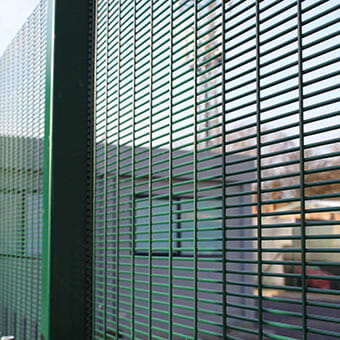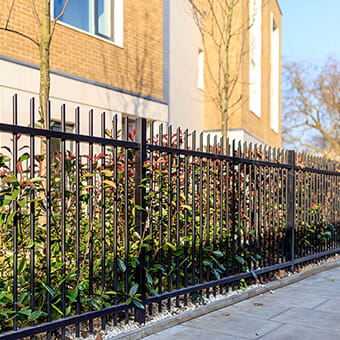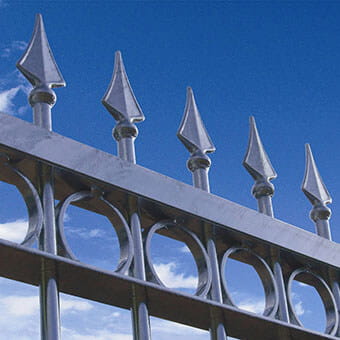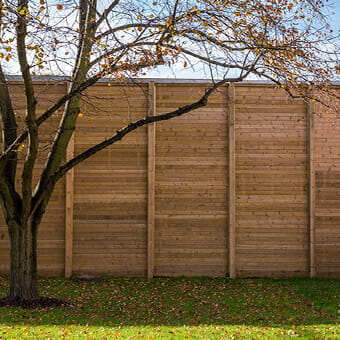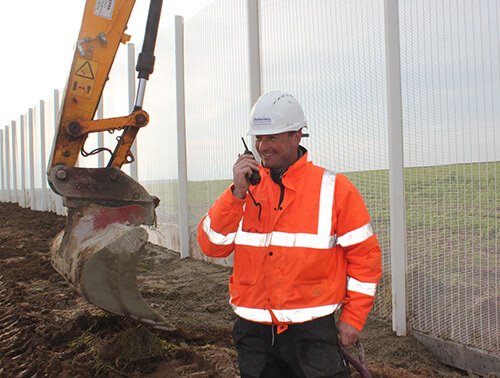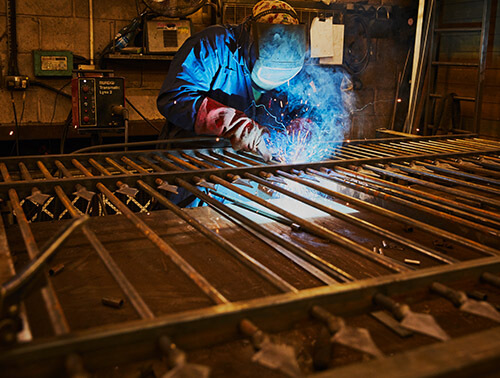Our other sites:
Choosing the right security fencing is one of the most important decisions you can make when protecting your site. Whether it’s a data centre, transport hub, utility site, warehouse, or retail environment, the perimeter fence is the first line of defence against intruders, vandalism, and theft. But with so many fencing systems available, how do you know which is right for your situation?
In this guide, we’ll explore the main types of security fencing, explain what they’re best suited for, and help you understand how to specify the right system for your security needs. We’ll also outline the key factors that influence your fencing specification because security fencing is never a one-size-fits-all solution.
Start with a Security Fencing Specification
Before deciding which fence to install, start with a threat and risk assessment. This helps determine what level of protection you need and ensures you’re not over- or under-specifying.
Ask yourself or the client four key questions:
1. Who or what am I trying to protect?
Are you securing people, equipment, or critical infrastructure?
2. What is the likely threat?
Consider the type and capability of potential intruders. Are you guarding against vandalism, theft, protest activity, or organised attack? The higher the perceived threat, the stronger the fencing system you’ll need.
3. How much time do I need to delay the threat?
Security fencing rarely works in isolation; it’s part of a layered defence. The purpose of the fence is to delay intrusion long enough for a response to be triggered, whether by on-site security staff or remote monitoring.
4. Are there other requirements needed from the perimeter fence?
Does the fence need to offer privacy, reduce noise, or block light pollution? Is the site high security and requires a hostile vehicle mitigation (HVM) solution, or should the fence remain discreet and unobtrusive?
These four questions form the backbone of any security fencing specification. Remember: price should never be the first factor in your decision-making process. The cheapest system may appear cost effective upfront, but if it fails to prevent access or withstand attack, the long-term consequences can be far more expensive.
The Main Types of Security Fencing
There are several different styles of security fencing, each designed for different environments, risks, and budgets. Below, we outline the most common types and where they work best.
1. Vertical Bar Railings
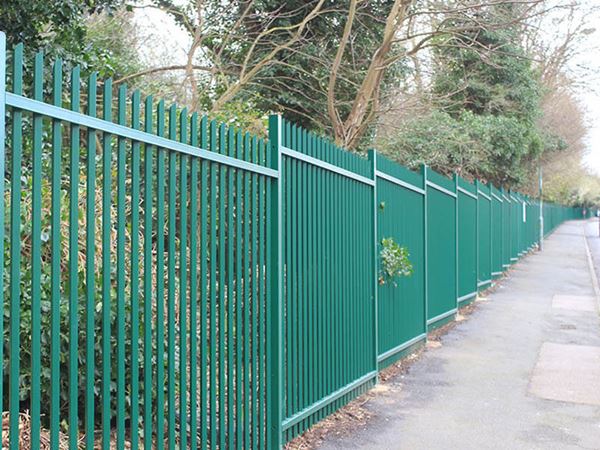
Best for:
Vertical bar railings are a classic choice for locations that need both security and visual appeal. The open design provides clear visibility, which is important for surveillance, while the vertical pales make it difficult to climb. Because wildlife can pass between the bars, they’re ideal for sites near natural habitats or where ecological considerations apply.
This type of fencing is also strong, durable, and highly customisable; available in various heights and finishes. Unlike palisade fencing (which we’ll touch on later), vertical bar railings maintain a more welcoming appearance while still offering excellent perimeter protection.
2. Welded Mesh Panels

Best for:
Welded mesh fencing is one of the most versatile and widely used forms of security fencing. It’s available in several configurations, each suited to a different security level:
V Mesh Panels – Cost-effective and popular for medium security applications like schools, sports facilities, and commercial premises. The V-shaped profiles add rigidity without increasing cost.

Twin Wire Mesh Panels – Offer a stronger structure than standard V mesh due to their twin horizontal wires, making them more resistant to cutting and impact.

358 Mesh (also known as prison mesh) – Named for its small apertures (3" x 0.5" x 8-gauge), this is an entry-level high security mesh that’s extremely difficult to climb or cut. Commonly used for prisons, utilities, data centres, and other high-risk sites.

Double Layer High Security Mesh – Combines two layers of fine mesh for maximum resistance against attack. Ideal for critical infrastructure and defence sites.

Because of its flexibility, welded mesh fencing can be adapted for almost any security requirement, from low to very high risk. It’s also visually unobtrusive and allows for easy CCTV integration.
3. Acoustic Barriers
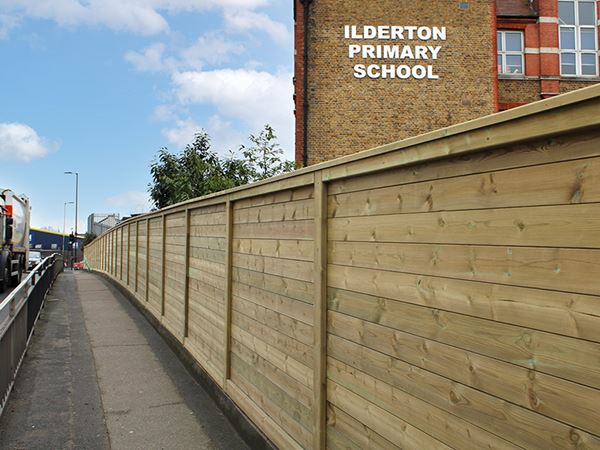
Best for:
While primarily designed for noise reduction, modern acoustic barriers can also serve as effective security fencing. They’re typically constructed from timber or a combination of timber and steel, providing privacy, noise reduction, reduction from light pollution, and protection. LPS 1175 versions of acoustic barriers feature steel mesh layers for added protection.
An acoustic barrier system is particularly useful when a site requires both noise control and perimeter security, for example, where a data centre borders residential areas or where a utility site is located near public roads. When installed with secure foundations and anti-climb features, acoustic barriers deliver excellent security performance alongside sound attenuation.
Acoustic barriers also double as privacy fencing, shielding sensitive operations or valuable equipment from view; another important factor in deterring intruders. They don’t draw attention or suggest that something valuable is being protected. To a passerby, they appear more like a standard timber garden fence than a security barrier.
4. Privacy Security Fencing

Best for:
Privacy security fencing includes systems such as mesh panels with solid infills (for example, EuroGuard® Combi) and acoustic barriers. These systems have privacy-enhancing designs that prevent visual access while maintaining a robust physical barrier.
For organisations where discretion and appearance are as important as protection, privacy security fencing provides an ideal solution.
5. Palisade Fencing (A Note)
Palisade fencing has historically been one of the go-to options for perimeter security in the UK. However, it’s worth noting that we do not manufacture or supply palisade fencing; instead, we offer vertical bar fencing as a stronger, more modern, and aesthetically pleasing alternative.
Palisade’s design can be vulnerable to certain types of attack and lacks the clean, contemporary look of vertical bar or mesh fencing. For these reasons, many sites are moving towards alternative systems that provide equivalent or superior performance.
What Else Should You Assess?
As mentioned in the fourth question, when specifying security fencing, your risk assessment should go beyond just the type of fence. Consider the following additional factors:
Each of these factors contributes to the overall effectiveness of your fencing system.
Selecting the right security fencing isn’t just about choosing a product, it’s about designing a system that matches your site’s unique risks, operations, and surroundings. From vertical bar railings that protect public spaces with style, to 358 mesh panels securing high-risk utilities and acoustic barriers that deliver both privacy and performance, the right fence provides the reassurance that your people, assets, and operations are protected.
If you’re unsure which fencing system is right for your application, start with a comprehensive threat and risk assessment and consult an experienced manufacturer. With the correct specification, your security fencing will provide long-term protection, durability, and peace of mind for years to come.
Related Content
You may be interested in specifying acoustic barriers or specifying fencing for specific applications and sectors; read our guides:
Related Products
Jacksons Fencing have a large range of related products, all complete with our 25 year guarantee. If you cannot find the item you are looking for, please do not hesitate to call our friendly sales team.
Related Content
Top
